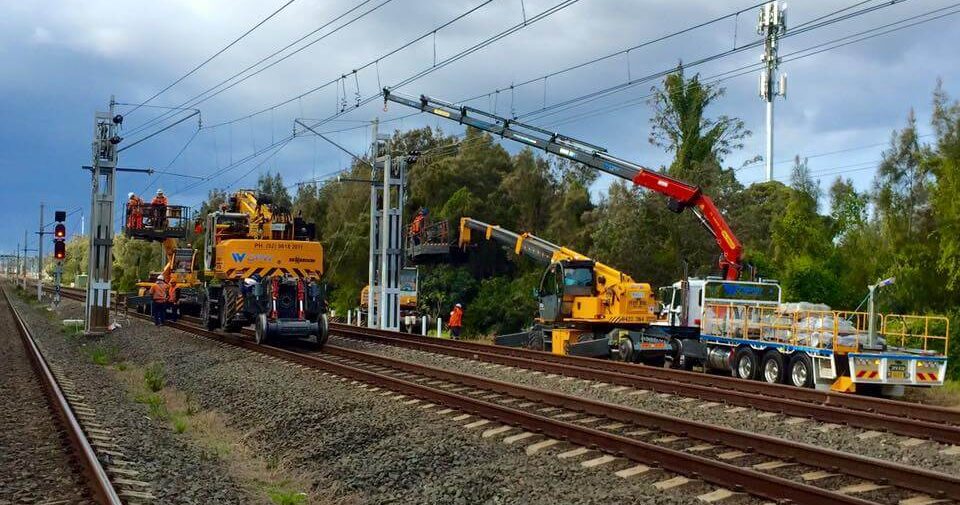Over the next 10 years, the Australian Government is dedicating $100 billion dollars in infrastructure works across Australia. Notable rail projects include:
- Sydney Metro, Australia’s biggest transport project with a project value of $12.5 billion with $8.5 billion already spent on stage 1
- Melbourne Metro Tunnel with a project value of $11 billion dollars
- Level Crossing Removal Program dedicated to removing 75 level crossings across Victoria
- Melbourne to Brisbane Inland Rail which is Australia’s largest freight rail project as it spans across 13 individual projects and 17,000kms
- Cross River Rail The $5.4 billion Cross River Rail is a new 10.2km rail line from Dutton Park to Bowen Hills, which includes 5.9 kilometres of tunnel under the Brisbane River and CBD.
With the increase in rail projects, compliance management becomes more stringent and operational efficiency becomes key to scaling businesses and delivering projects on time and within budget. Key challenges rail contractors are facing include managing a widespread team, underutilised resources and large admin overheads.

Managing widespread teams
With projects widespread across Australia, ensuring that all crews have the essential paperwork, job details and compliant machines on-site proves difficult. Consequently, communication becomes crucial to operational efficiency. Allocators and operations managers are well known for their amazing memory. They remember which operators are best suited for particular jobs, where their assets sit across different projects and usually manage this via a whiteboard, physical diary books, SMS groups, email threads and lots and lots of phone calls. To remain competitive and generate operational efficiencies, more rail contractors are turning to operations software to manage the allocation of their team.
Operations software is a central hub of information. Including worker competencies, assets required and all-important documentation. With all this vital information stored on the platform, rules are set to ensure that when allocating only compliant rail workers populate. Once allocated, rail workers are notified via SMS and can view their allocation on the mobile app. The SMS is sent from the dashboard via templates aligned with segments set by allocators or operations managers. Consequently, the right information is sent to the right group of rail workers or crew and is all easily accessible via their phone.
“As rail projects have extremely complex planning and compliance requirements, knowing where our team is and that they are 100% supported every step of the way gives us great peace of mind.” – Krystle Divertie, Resource Manager – Martinus Rail
Underutilised resources
The Rail Industry Worker (RIW) program provides a centralised competency management system for rail contractors. The program is largely promoted by the Australasian Rail Association. As rail projects grow and the demand for more rail workers arises, stringent compliance management is imperative in ensuring the safety of all those on the job. Additionally, visibility and forward planning prove key to ensuring that rail workers are not denied access when they swipe to start their day on the jobsite.
Operations software aligns with the RIW program, as assets from tamping express to hi-rail crane trucks have their own profile with machine pre-starts and maintenance logs digitally submitted and stored. Form results can be emailed to maintenance teams for action and digital logs ensure compliance for audits.
Additionally, one of the largest costs for rail projects is labour. So when rail workers arrive on-site and swipe on for access and get denied because their competencies do not meet the requirements, significant project delays occur. The supervisor on-site needs to call for a replacement which is usually quite hard to backfill and an approval process of up to 24 hours for additional competencies to be added via the RIW program can occur for the rail worker who actually has the competency but has not updated via the RIW program.
Allocating via operations software ensures that rail workers scheduled don’t get turned away after they swipe at the gate. Having visibility into competencies alongside compliant assets allows rail contractors to take charge of their planning and manage underutilised resources. Consequently, reducing the number of rail workers unable to work once arriving on-site and seeing when machines are lingering at the yard. This insight reduces downtime and allows resources to generate revenue instead of remaining idle.
Large admin overhead
Timesheets, dockets, machine pre-starts and SWMS are examples of important documentation that is largely paper-based within the industry. The construction industry is well-known for its low adoption of technology. Due to this phenomenon, rail contractors manage crucial safety forms and data for pay and charge via paper. Given such, inefficiencies start at the collection of such information. With teams widespread, timesheets and dockets can be largely time-consuming to collect. Scott, Director of Affective Rail noted that “Prior to using operations software, timesheets were sent through multiple avenues. Some were emailed, dropped at our admin’s desk in the office or sent as photos. We would have to look in many different places to find them but even then, they could get lost or were illegible which could lead to discrepancies between timesheets, dockets and invoicing.”
In addition, the quality of timesheets and machine pre-starts also contributes to inefficiencies. Muddy timesheets, illegible writing or weather-ridden dockets creates a back and forth to verify information submitted. With a digital solution, timesheets and dockets are submitted via the mobile app, with date and time logged as well as geo-location to ensure it was submitted on site.
“Transitioning from hard copy documents such as pre-start checklists and SWMS to digital has reduced the time we spent chasing up and processing these forms by 50%”. – Paul Waters, Managing Director – DPW Plant Hire
End-to-end digital solution
Assignar is the operations software rail contractors trust to manage their business and combat the challenges faced in the industry. From widespread teams to underutilised resources and large admin overheads, Assignar provides the real-time data insights rail contractors trust to run an efficient business and grow as the infrastructure boom continues to grow. Discover how and request a demonstration today!



